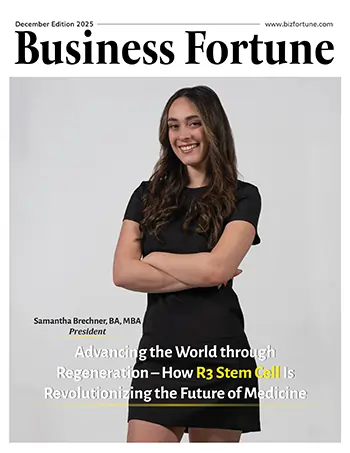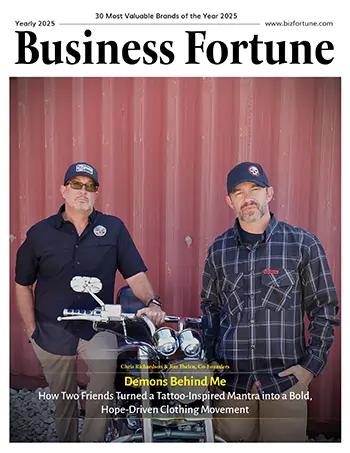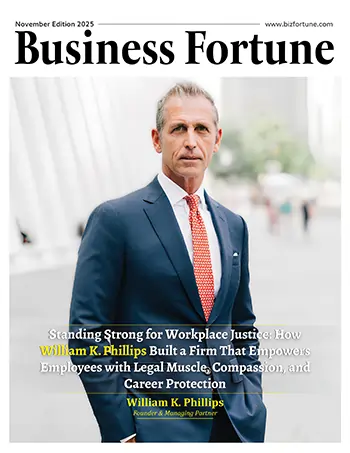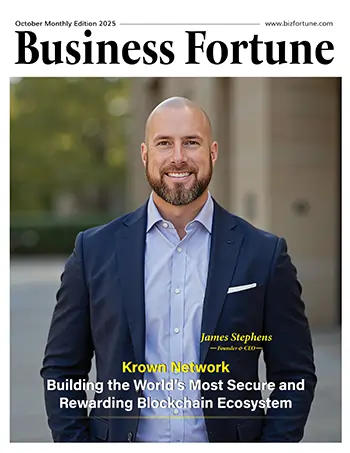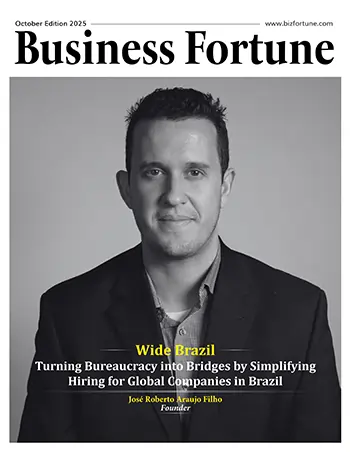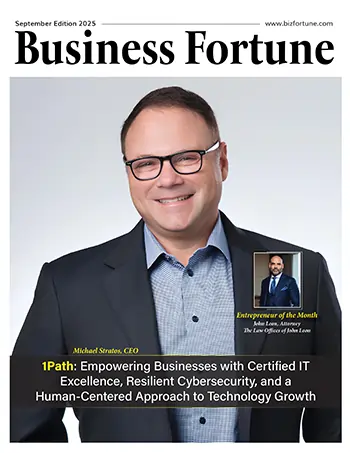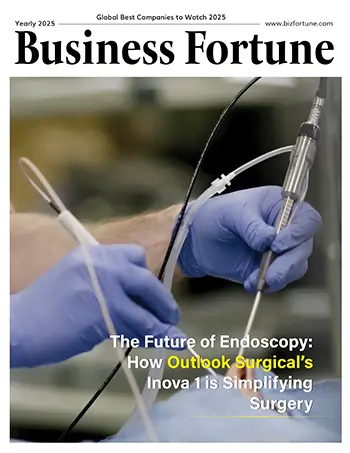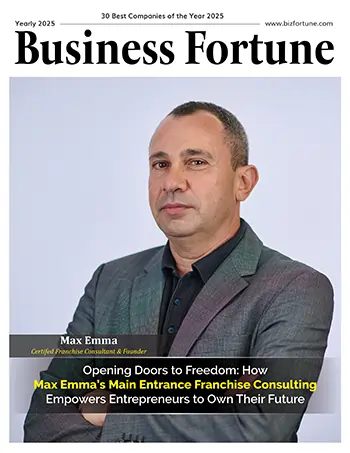Home Others Artificial Intelligence Strategic M&A in the Age o...
Strategic M&A in the Age of AI: How Founders Can Position for Acquisition in a Rapidly Evolving Landscape
Artificial Intelligence

Business Fortune
20 July, 2025
-Noah Davis
Most AI founders fail to position their companies for acquisition by emphasizing their technological breakthroughs instead of addressing the primary concerns of potential acquirers.
Despite mergers and acquisitions (M&A) activity increasing by about 12% in 2024, numerous AI startups with solid technology still struggle to attract serious acquisition interest. The gap lies in strategic positioning rather than technical capabilities.
This pattern is precisely what Venture Capitalist Tony Kim sees repeatedly, where he specializes in AI and infrastructure deals across venture and M&A. Tony observes: "What I hear from the industry is that many founders feel investors often don't understand their positions.
"They spend months perfecting their pitch decks, highlighting their AI capabilities, data advantages, and technical moats. But they fundamentally misunderstand what drives acquisition decisions."
Tony's perspective on this positioning gap carries particular weight given his unique vantage point in major AI deals and AI infrastructure markets. During his career, Tony has evaluated over $100 billion in potential M&A transactions and investments.
His infrastructure finance background directly informs this expertise: "During my time in banking, many projects I did directly contributed to the infrastructure betterment of the US economy. I've worked on financing for data centers and fiber networks, both greenfield and brownfield, contributing to cloud and compute initiatives."
This hands-on experience with critical technology infrastructure now enables Tony to evaluate AI startups through the lens of long-term strategic impact and operational scalability that acquirers prioritize.
As he puts it: "AI is disrupting the whole industry. If you stick with your old ways, the world won't look the same in five to 10 years." This disruption creates the context for why positioning matters so much.
The Strategic Positioning Gap
Tony identifies the main problem as the way AI founders present their products to the market rather than the products themselves. The evaluation process for AI companies by acquirers requires a fundamental transformation: "There's a question out there: Would you invest in a company with the greatest product but a poor salesman? Or would you invest in a company with a mediocre product but a great salesman? I will always back the latter. The reason is that in most cases, the team matters a lot more in terms of how the company will do moving forward."
Tony bases his investment decisions on his understanding of this business reality. His investment strategy focuses on intellectual humility as his core principle.
He reflects: "I think modesty is a big one—just being able to be humble, accept sometimes you're wrong, and never stop learning." This mindset directly shapes how he advises founders on positioning. Rather than leading with claims of technical superiority, successful founders demonstrate their ability to adapt and solve evolving problems. What matters most, he says, is solving the customer's problem—not just chasing headline metrics.
The investment philosophy he follows guides his support for founders, as well as his investment choices. According to him, starting a business requires more than just talent because it demands perseverance.
These insights come from extensive mentorship across premier accelerator programs. As a judge for the nationally recognized 43North competition, a highly selective program that awards $5 million grants to top startups. Tony's role reflects industry recognition of his expertise in evaluating scaling potential. His speaking roles at flagship NYC Tech Week events and the Digital Venture Forum further demonstrate his established thought leadership in venture capital and AI infrastructure: "Even if we can't do anything for a specific company, I still spend time writing out why we're not moving forward. That feedback helps a company a lot," Tony explains, demonstrating his commitment to founder development beyond just investment decisions.
Partnership-driven Approach that Creates Value
Many corporate VCs over-index on statistical data points. Tony operates with a different approach than other investors. Tony devotes his attention to understanding the difficulties that founders encounter, rather than concentrating on deal statistics like other investors do.
He reveals: "I really love the aspect of being able to work closely with founders and startups. We don't just invest—we structure partnerships that benefit the companies, finding ways to give back to the startups."
Founders require assurance that their specific business challenges will be understood by an investor who will provide more than just financial support. The way he approaches founders becomes essential when teaching them about acquisition readiness.
Crystal Liu, an established AI investor who has worked closely with Tony, has witnessed this strategic methodology firsthand: "He's very well connected in the industry through his roles as a judge at 43North, his involvement in NYCEDC's Venture Access Alliance, and his participation in premier industry events like NYC Tech Week and the Digital Venture Forum. He helped introduce some of my founders to other VCs, and he was able to help guide them on what the right type of strategy they should have at what stage of their startup development. So I think he's very strategic from that perspective."
Crystal adds: "Tony knows who's good on the cap table and at what time to bring those people onto the cap table. So I think that's a unique capability he has, because he's well connected, and then he's seen the corporate venture work, so he knows what type of collaboration the startup should have at what time."
Tony's focused guidance comes from his deep sector expertise. His coverage spans AI infrastructure, semiconductors, compute, and networking. These strategic market insights and valuation expertise and competitive analysis of frontier technologies that Tony provides are frequently requested by leading venture capital partners.
Tony explains: "I've had partners from different funds asking me about industries like the semiconductor AI accelerator space, because I know this space fairly well—how to value or analyze a company, differentiate one from another—since I dive very in-depth."
Tony's thought leadership extends across multiple prestigious platforms. His invitations to speak at premier industry events—including NYC Tech Week panels and KiwiTech's Venture Capital Panel—are reserved for leaders with proven acumen in venture investing.
As a speaker and mentor at NYCEDC and a member of their Venture Access Alliance program, Tony's contributions shape emerging entrepreneurs across New York's innovation ecosystem. He encourages founders to frame solutions around clear operational priorities and strategic imperatives, rather than focusing solely on technical achievements.
What Separates Winning Pitches from Rejections
Tony says most founders receive identical feedback: "Interesting, but not for us." The pattern emerges repeatedly. Founders focus on technology features instead of addressing the specific doubts that keep decision-makers awake at night. Tony has seen all this firsthand.
Nabil Amir, a venture professional focused on frontier tech who has collaborated with Tony on deep tech deal flow, explains what sets Tony apart in identifying and developing winning investment opportunities: "Tony is consistently early to frontier market shifts, making them investable for others," he says.
Nabil adds: "This reflects Tony's mix of architectural understanding and market judgment, qualities sophisticated investors value. He brought the investment thesis together, which was not obvious given the frontier tech nature. Tony went above and beyond, building a compelling thesis for his team."
Tony's approach differs fundamentally in how he evaluates: "I consider how they carry themselves, if they're able to explain their products in a way that's technical yet understandable, and position themselves—that's usually a strong proposition."
His analysis goes beyond surface-level presentations: "Most cases, a lot of startups I talk to wouldn't realize other competitors out there until I bring them up. So this is another approach I bring whenever I talk to startups: I want to see them holistically, addressing every aspect from traction, go-to-market, product roadmap."
This comprehensive view mirrors how corporate acquirers evaluate targets. They need to understand not only the technology but also how it fits into their existing ecosystem and competitive strategy.
Tony advises: "Investors seek clear signals of scalability and differentiation. Founders should demonstrate a robust product roadmap that addresses market gaps, backed by traction metrics like user growth or partnerships. For instance, in AI semiconductors, highlight how your tech outperforms competitors in efficiency—don't just claim innovation; show it through benchmarks."
For acquisition scenarios, Tony reveals that this translates to demonstrating how your solution addresses specific operational challenges the acquirer faces, with a measurable impact on their strategic objectives.
Tony believes that successful founders achieve their goals by demonstrating that their technology solves the most critical operational problem that matters to the acquiring company. The rejected founders demonstrate their capabilities but fail to show how these capabilities create strategic value for the acquiring company.
Strategic Communication and Relationship Excellence
The long duration of acquisition processes leads many founders to experience both disappointment and inaction. The combination of his work experience in product development, engineering, and go-to-market operations at large organizations enables Tony to help founders match their value proposition with acquirer needs while minimizing integration challenges.
He adds: "That bridging work—connecting opportunities to business unit priorities—became one of the most rewarding parts of the job."
Tony's experience reveals the acquisition positioning secret that most founders miss: successful exits depend less on technological superiority and more on the founder's ability to navigate and address the diverse concerns of multiple internal stakeholders.
Tony observed during his time in a corporate environment that acquisition failures stem from founders who fail to recognize and address the strategic issues that different business units, product leaders, and engineering teams face during evaluation.
How Market Intelligence Systems Drive Acquisition Success
Most startup founders enter acquisition positioning without the correct knowledge about what acquisition teams value in potential targets. Founders base their acquisition strategies on fundamental performance indicators and public statements instead of following the complete analytical process that corporate M&A teams use for decision-making. The difference between successful and unsuccessful acquisition positioning depends heavily on the quality of market intelligence that founders present to potential buyers.
Tony recommends that founders maintain a simple, ongoing view of their market by leveraging public signals—such as product releases, ecosystem integrations, hiring, and open-source activity. Community indicators, paired with public benchmarks, can be persuasive. Founders can also track visible community adoption (e.g., open-source stars) to complement public performance evidence.
Tony's approach to market intelligence is a sophisticated, data-driven methodology that surpasses traditional startup metrics.
Through his work, he created extensive databases that unite public and private market information to monitor M&A and venture capital operations, delivering immediate insights into acquisition trends and strategic business priorities for specific market segments.
Beyond financial metrics, Tony's framework captures community engagement signals, such as GitHub stars, which he correlates with valuations to gauge community attraction alongside traditional traction metrics. This holistic system equips organizations with a competitive edge in understanding market dynamics and strategic opportunities.
The method reveals how technical communities embrace new platforms through their adoption patterns, which help predict future platform success. The strategic information obtained through this method affects acquisition choices.
Founders should recognize this as their main opportunity to position themselves effectively. Founders who want to succeed in acquisition deals need to create their own method for tracking acquirer M&A behavior, community engagement metrics, and strategic business openings.
Founders who demonstrate a clear understanding of both their own position and the acquirer's strategic environment during acquisition talks will establish themselves as strategic partners, rather than being viewed as mere acquisition targets.
Acquisition positioning success requires founders to integrate institutional market intelligence into their basic technology demonstration approach.
From Technology Showcase to Strategic Partnership
Tony believes that successful positioning requires uniting technical capabilities with business worth for founders. As he puts it: "In acquisition conversations, map your technology directly to the acquirer’s operating priorities; who owns it, how it integrates, and which metrics it will move." This mindset is precisely what successful founders bring to acquisition conversations. They connect their technology to the acquirer's specific operational needs.
The most successful founders maintain this strategic awareness throughout the acquisition process. Tony's approach emphasizes staying connected to market realities: "Keep talking to customers, partners, and builders so your positioning evolves with what’s changing at the edge every day."
This continuous gathering of market intelligence becomes crucial for founders who need to adapt their positioning as acquirer priorities shift.
AI founders who want to break out of the "interesting but not for us" cycle need to stop demonstrating their technology capabilities and focus on resolving essential business challenges, according to Tony. The companies that excel at this positioning transformation will achieve success in the AI consolidation movement, which is transforming the industry.



























